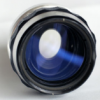Leaderboard
Popular Content
Showing content with the highest reputation on 10/21/2013 in all areas
-
oh man... lets face it, the GH3 has no place next to raw out of any camera that we've seen to date. i'm not here to slam your grade either. i'm not saying i don't see a niche for G cameras, they're great and cost effective. i have shot with many cameras, and just had the opportunity to shoot with some Schneider-Kreuznach Xenon FF-Prime's on a C300. lovely image. but for me, nothing comes close to the 5D3 for the cost. unbelievable image coming out of that camera. even if I had all the money in the world, i would still be looking through the Canon 5D3.2 points
-

In depth test - 5D Mark III and 7D Raw vs Blackmagic Pocket vs GH3
nahua and one other reacted to D.L. Watson for a topic
Manfrotto with a 502 head. Oh I get it, you think Trey Ratcliff is a talentless photographic molester. Well, at least he's successful at what he loves. You may not consider this footage to look very cinematic and that is your subjective opinion. In my opinion, I could grade Canon footage the same way and the image would fall apart. But you are right, using the Blackmagic Cinema Camera will tell the story of any film much better. I understand perfectly what Dynamic Range is. I know the BMPCC has wonderful graduations between highlights, shadows, and mid-tones. And I agree, the mid-tones are a little flat in my video. My point is, I graded that video in like 20 minutes in resolve. I believe with a little more time (and more talented colorist), one could produce extremely beautiful cinematic video from the GH3 and would be a great alternative to the BMPCC. It's a nice camera to buy until Blackmagic gives us proper audio metering, compressed RAW, and oh yeah - make them available to buy and shipped within a week.2 points -
This doesn't exactly give you the "cinematic" look.... It looks like a .jpg that's been molested by Trey Ratcliff in Photomatix.2 points
-

In depth test - 5D Mark III and 7D Raw vs Blackmagic Pocket vs GH3
Dustin Young and one other reacted to D.L. Watson for a topic
If you expose for blown out highlights, push shadows, clean with neat video, you can capture just as much dynamic range from the GH3 as you can from Magic Lantern RAW. https://vimeo.com/760307182 points -

Blackmagic Pocket Cinema Camera, anamorphic lens.
nahua reacted to roccoforte for a topic
Took my BMPC for a spin in the Salton Sea, CA. https://vimeo.com/772684681 point -

In depth test - 5D Mark III and 7D Raw vs Blackmagic Pocket vs GH3
Francisco Rios reacted to Andrew Reid for a topic
[media]http://vimeo.com/77268402[/media] 68GB worth of material was used to get a studio based test this finely tuned, with the cameras matched in post as close as possible. This effort to remove the variables of grading and camera settings leaves behind a truer picture of the differences in hardware capabilities. The 5D Mark III raw (from Magic Lantern), if it were a film stock, would be Fuji. Warm vivid colours which may need taming a bit in post. The Blackmagic is more Kodak, cooler and more muted, it often requires the opposite treatment in post to the Canon cameras. The 7D is totally back from the dead - with Magic Lantern raw and the Mosaic Engineering VAF-7D tested here, it offers lovely image quality from a Super 35mm sized sensor, at a similar price to the Pocket Cinema Camera. The Panasonic GH3 - best of the standard system cameras out of the box without modifications does a good job keeping up with them. The scene was lit three ways to test resolution, dynamic range and low light performance. [url=http://www.eoshd.com/content/11350/depth-test-5d-mark-iii-7d-raw-vs-blackmagic-pocket-vs-gh3]Read the full article here[/url]1 point -

In depth test - 5D Mark III and 7D Raw vs Blackmagic Pocket vs GH3
Michael Cha reacted to maxotics for a topic
If you want portability, the EOS-M will do BMPCC like dynamic range at 720p. You can use all your lenses. If you can live with 720p, and some post-processing extra work, bodies are about $250. I maintain a thread on ML here: http://www.magiclantern.fm/forum/index.php?topic=8825.msg82944#msg82944 (hope you don't mind the link Andrew)1 point -

In depth test - 5D Mark III and 7D Raw vs Blackmagic Pocket vs GH3
PTRush reacted to D.L. Watson for a topic
Hey man. I totally understand that. The 5D Mark III is the perfect cinema camera in my opinion. It produces the best RAW images I've seen out of any camera. There is not question about that. I guess my point I was trying to make failed to resonate about the GH3. I've worked with RAW, Blackmagic, and RED, and for the price, the functionality, and lack of needed accessories - the GH3 holds up fairly well. But I guess I don't know what I'm talking about. I just create images that look like they had been molested by Trey Ratcliff. :P1 point -

In depth test - 5D Mark III and 7D Raw vs Blackmagic Pocket vs GH3
marcuswolschon reacted to Andrew Reid for a topic
Bottom of the lot for the stock video quality overall.1 point -
Andy- hate to be "that guy", but this clip doesn't prove a darned thing. You posted it earlier as well, and as someone else already pointed out there is so much motion going on that you wouldn't be able to spot a clean key versus a messy one in the first place. Not to mention it has been down sized to 480p. I mean, any HD camera downsized to 480p will work according to my explanation above about resampling. I'd say you could have probably shot this on an iPhone4 and gotten roughly the same results. Just saying.1 point
-
In depth test - 5D Mark III and 7D Raw vs Blackmagic Pocket vs GH3
Andrew Clunie reacted to thedest for a topic
You guys are not getting the REAL concept of dynamic range. You guys are thinking that a great dynamic range is just a detailed sky or detailed shadow. Nope! When we talk about dynamic range we are talking about highlights, midtones and shadows - and the gradations between them - those are the steps of dynamic range. If your camera has 8 stops of dynamic range in video mode, it doesnt matter what you will do in post, it will still have 8 stops. When you expose your GH3 for the highlights and recover the shadows, you are NOT increasing your dynamic range. You have the same amount of stops. You are just favoring the highlights and the shadows. What happens then? You simply crush and destroy the midtones. In the video posted above you can clearly see that. In the video, everything looks like its made of plastic. You have no gradation in the midtones. The cars look like a colored stain. The image is NOT cinematic at all. In the BMPCC you will have beautiful gradations well distributed in the highlights, shadows and midtones, and thats why they look cinematic. So remember, good dynamic range is not about seeing the clouds or whats in the shadows, its all about having great gradations from the bottom to the top!1 point -
In depth test - 5D Mark III and 7D Raw vs Blackmagic Pocket vs GH3
gloopglop reacted to nathanleebush for a topic
Thanks for the test! Your blog is the most vital destination for budget filmmakers on the web, IMO!1 point -
Here in video i did shoot with Nikon D5200 and flaat 11. no collor correct.. Straight from camera.. DR isnt bad with D5200 ;) http://youtu.be/MR5a-dxg7-g And here is the "fixed" http://youtu.be/J9IsZFtdQ-I1 point
-
Cool, I get to be the first posted comment, which is: SIMPLY F'ING AWESOME! I don't know how you get the time to do all this but this is what I've wanted to know for months! Finally I can get on with my life. THANK YOU!1 point
-
I think what Axel is saying, citizenkaden, is that if you want a nice 3d like chromakey, the background wrapping around the actors, you would build the set like that pictured. The problem with such a set is that the side walls in green will reflect green light onto the actors and that will confuse the chromakey. So you want the software to differentiate between green on the screen, and green that has been "spilled" onto the actors. When I first read about this I thought it was stupid. Until I tried shoot green screen in a small room and it kept spilling onto arms and hair (that is, a green reflection). If the OP can't place his actors far enough from the green screen he/she will run into this problem. dishe's link clearly explains why 4:2:0 does not give accurate pixel level chroma for the software to work with. Even 4:2:2 is not perfect. In practical terms I would say this, SCENE A: Actors are in big sword fight on some crazy tropical island. The green screen is in a large room with plenty of room for lights, actors, etc. A G6 would be fine. SCENE B: A man and woman are having an intimate talk aboard a "starship" with a window overlooking space. Plenty of closeups. The woman has fine, flowing hair. Then xenogears BMCC is, if you ask me, would be the only chance you have of making it look real.1 point
-
You are not an idiot, I guess my english isn't very good. With 'unless you work in a set like this, you can do with 4:2:0' I was trying to say that it is not good for 4:2:0, because of the overall spill. The sentence may have been grammatically wrong. If there are roughly 4 pixels on the edges where green and foreground mix in 4:2:0 without any spill, you can imagine how many there will be with a lot of spill ... As human being, with eyesight limited to 4:2:0, you probably see purple dots if you close your eyes in this studio. Personally, I have never been on such a set. But I can't believe that color keying will suffice to get a clean matte for the Peter Jackson team. There will still be some trainees who spend hours and hours on rotoscoping additionally. And you can detect another trick in all LOTR movies: The actors are always backlit. Read jghardings post here.1 point
-
man, ive been trying to wrap my brain around the whole color sampling thing for awhile now, and ive understood it enough to be successful in practice, but conceptually the little illustrations in this article really helped me a lot, thank you dishe!1 point
-
The "cheapest: camera for "perfect" green screen work? Simple, The Blackmagic Cinema Pocket. Obviously you can do chromakey work with 4:2:0 cameras, this has been done for many years. but if you really are looking for the cleanest key do you need at least 4:2:2 and more if you need to key hair and translucency. My basic needs for a good key are: 1. Lighting and subject isolation without spills. 2. Sharpness1 point
-
The whole idea of 4:4:4, 4:2:0 and 4:2:2 is, as has been said, the ability to create low-bandwidth video by compromising on color space, which we are less likely to notice (over contrast/sharpness). The better color information you have, the easier to key. Andy should write all the people who spent $5,000+ on cameras that do 4:2:2 or 4:4:4 and tell them they wasted all their money ;) Andy, all you need to say is, yes, color keying is easier on a 4:4:4 camera, but for what you want to do, your money is better allocated on a 4:2:0 camera like the G6 and good green screens, lighting and software. No one here has argued against that! We've only tried to educate the OP on the issues. You're effectively saying that some of us don't know anything about real-life shooting, only academic theories. Also, you shoot music videos that are so busy, visually, that no one would notice green in the hair, etc. We don't know what the OP is wanting to shoot. It's Murphy's law that one day, Andy, you will get a job where the client will notice the difference. Remember to report back to us ;)1 point
-
Surprise! New Sony RX10 sensor has 5K full pixel readout
Zach Ashcraft reacted to Flynn for a topic
They look overexposed1 point -
It would not be any less accurate than a camera recording that resolution in 4:4:4 color. The accuracy of the color isn't in question- the resolution of it is. The accuracy of any given pixel is really a side effect of how much resolution each color channel gets. As I understand it, color sampling is reducing the resolution of certain color channels in order to save bandwidth on compressed video. The idea is that your eyes will see the difference in contrast more than the difference in color, therefore not every channel of color needs the full resolution. This is mostly true, as side-by-side the images look identical to the human eye, until you isolate colors. So when we say 4:2:2, you are saying that for every 4 pixels, cB gets 2 and cR gets 2. If you isolate the red channel in After Effects, and you'll see the resolution is lower than the full image, with the borders around objects much less precise and blocky looking/pixelated Here's an example of this: Top part shows the full color sample, bottom is the resolution of the actual color channels. But like any enlarged picture that looks heavily pixelated, if you scale it down the discrepancy between the lost pixels is gone, resulting in a resampled fine pattern around the borders instead of the blocky pixels. In other words, there would be no difference from a picture taken at that correct resolution. As far as I can tell, this is why having higher color sampling makes a difference to chroma keying in particular, not because it is hard to see what is "green", but because the borders of color aren't as well defined, and it can wreck havoc on the edges of your key. Again, its not about color accuracy, but resolution of the color channel you are trying to key out. If this is going over anyone's head, there's a great write up here on DVXUser about it: http://www.dvxuser.com/articles/colorspace/ Yes, shooting full res 4:2:0 and even 4:2:2 won't give as smooth of a key as 4:4:4, as the edges are inherently less defined by the very nature of color sampling. That doesn't mean it isn't possible, and that doesn't mean you can't pull of a great key regardless... especially if you are able to reduce the image being composited to clean it up. But this isn't just "smoke and mirrors", Andy. Its science. None of these cameras operate on magic. Understanding how it works in order to make an educated decision vs. just recommending perhaps a great all-around-camera is important! He isn't asking what's the best all-around camera right now! There are cameras around the same price point as the G6 that are capable of recording more color information per frame. I understand what you are saying about RAW file management being a beast- I agree. But a 4:4:4 compressed image, or heck even a 4:2:2 will be far cleaner than a 4:2:0. And that's my own real-world experience backed up with science!1 point
-
another original anamorphic lens from China!
Zmu reacted to tony wilson for a topic
He who wishes to be rich in a day will be hanged in a year leonardo da vinci grasshopper my child you name this in honour of a god who fell to earth. leonardo of italy. i call it panasonic japan. you name your plastico fantastico your wing yip your long dong of china. as tribute to a man sent from the stars mighty leonardo da vinci. ohhhh ohhhh to be damned with such faint praise. poor leon : ( .1 point -

Latest music video: Anamorphic zombies on hacked 50d
Tim McC reacted to Tito Ferradans for a topic
I just shot with a LOMO Foton A last weekend, also raw, and also 50D, and had A LOT of trouble as well. Just a few times I had problems with continuous, but the camera crashed every now and then, and took a little while to get it running again. I was using a build from mid September Even with all the problems, I didn't get any pink or corrupted frames. As soon as the short is ready, I'll post it here too. :)1 point





